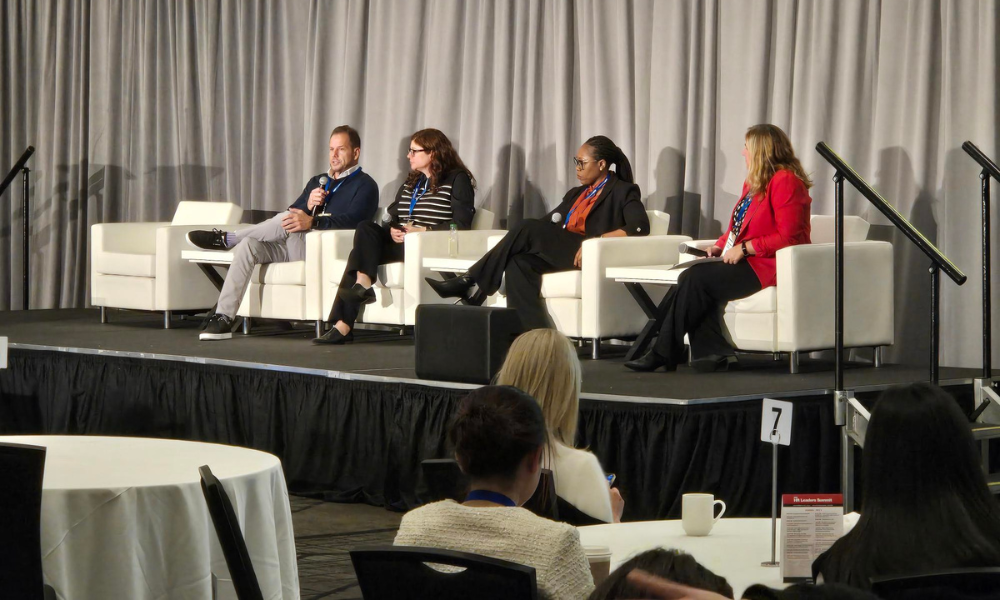
CHRO of Best Buy Canada discusses mentorship, career pathways at HRD's HR Leaders Summit

Chris Taylor, CHRO at Best Buy Canada, opened up about the company’s evolving approach to mentorship, career pathways, and learning development at HRD’s HR Leaders Summit yesterday.
The summit, held on November 12 and 13 in Toronto, with Taylor speaking on a panel titled ‘Empowering employees - prioritizing career development initiatives.’ His insights reveal how Best Buy navigates complex challenges in nurturing talent and shaping a robust organizational culture.
Mentorship is a core component of the company's approach to employee growth, but not in the traditional sense. Past efforts that involved structured software and formalized matching didn’t stick.
"We weren’t as successful in matching mentors initially—there was some success, but not fully,” Taylor said during the panel.
Instead, Best Buy chose to integrate mentorship more organically into its daily operations. One example is what Taylor calls “skip-level meetings,” a type of session where executives meet with employees at any level within their vertical. This informal, dynamic approach helps bridge the gap between different levels of the organization.
“We don’t call it mentorship, but I believe, from my perspective, it is a form of mentorship,” he said.
The company also shifted gears by bringing in talent coaches who help guide the career of individuals. The six-month program allows employees to opt-in and receive support in navigating challenges with leaders or prioritizing their work. These coaches can take on up to 40 individuals at a time, offering a personalized touch that Taylor believes has replaced the need for traditional mentorship models.
It’s a formal, yet flexible approach, designed to meet the unique needs of employees.
Another area where Best Buy has made significant strides is gender diversity, particularly in leadership roles. Taylor acknowledged that the male-to-female ratio isn’t where the company wants it to be. In response, Best Buy rolled out a learning development program called Lift, aimed specifically at supporting female employees.
These sponsors provide guidance, helping participants overcome barriers and gain confidence in taking on leadership roles. It’s a tailored solution that addresses a specific challenge while fostering a supportive network within the organization.
“Every single Lift member gets a sponsor, usually at a senior level,” Taylor said. “We have one program that’s specifically designed to have a better channel of females who join our organization and might be a little hesitant to go up into leadership. Lift helps them remove those barriers and become more confident in what that would be like for them by working with somebody who's already moved through the leadership track.”
When it comes to career pathways, Taylor highlighted the shift towards a skills-based organizational model. Best Buy’s corporate structure includes about 1,200 traditional roles, with a significant portion dedicated to tech jobs. The company had faced challenges in filling these positions, both externally and internally, until the pandemic changed the game.
Remote work opened new doors, allowing employees from across the country to take on roles previously limited to the Vancouver headquarters.
To address this gap, Best Buy developed a comprehensive system where employees can log their skills and job interests. Store leaders play a crucial role in this process by inspiring team members and sharing potential career opportunities within the organization
“Our store leaders weren’t equipped to tell the story of what jobs were available,” Taylor said. “But now, the most important part is that the store leaders are able to tell the story on what's available at Best Buy and inspire employees.”
However, not every employee aspires to climb the career ladder, and Taylor recognizes this reality. For some, it’s a matter of confidence rather than a lack of ambition. In these cases, Best Buy conducts career conversations to explore potential growth avenues.
Taylor shared a story of an employee who initially resisted a promotion but later thrived in a new role, which is a testament to the power of leadership in recognizing potential and providing the necessary encouragement.
“She said, ‘Absolutely not. There’s no way I can do that job.’ And she is now Vice President in our Merchant Merchandising Group,” he said.
Best Buy’s approach to learning and development has also undergone a significant transformation, especially during the pandemic. The company moved almost entirely to online learning, a decision that Taylor believes has had mixed results.
“From a cost perspective, it’s fantastic; you can get more people in programs faster,” he said.
Yet, he also noted a gap in the effectiveness of this model, particularly when it comes to reinforcing learning in practical, day-to-day applications.
Taylor shared an example involving the training of employees for newly converted Best Buy Express stores. In the first two stores, where staff received extensive live, side-by-side training, sales increased by over 30%. However, when the training was scaled up and delivered entirely online, the results were less impressive.
The experience highlighted the importance of in-person, hands-on learning, prompting the company to reconsider its approach and pivot back towards more interactive, on-the-ground training.
“We’re going to actually send a lot of our people into the stores to see how they’re doing and help,” he said.
Despite the push towards digital solutions, Taylor remains a firm believer in the value of face-to-face interactions. The essence of certain skills, like public speaking, requires an in-person element that can’t be replicated through a screen. This realization is shaping how the company plans to reinvest in live learning experiences moving forward.